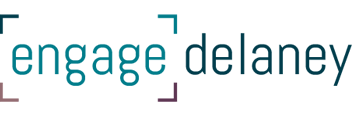By Design: Bringing Intention to Engagement Design
I recently read an article about an organization working to establish their culture by design rather than by default. Their approach, happily, included engagement of internal stakeholders.
The concept of “design rather than default” made me reflect on my work as an engagement professional.
I design processes that bring those impacted by a decision into the realm of influence. Those within the system – the decision maker, staff, consultants, “experts” – often have experience with engagement and believe it adds value. These individuals, however, often have a “default” process to which they turn.
For example, some organizations have experienced success with surveys, and so now their engagement default is surveys; alternatively, other organizations have established advisory committees, and these become their “default” or de facto engagement mechanism.
This isn’t a critique of using engagement techniques or mechanisms that work; rather, it’s a suggestion to ask the question: Are the techniques and processes you are using a default, or are they by design? Are they establishing the kind of engagement culture your organization wants to champion, or are they just easy and comfortable?
Engagement design is my favourite. I love, love building a workshop, a planning session or meeting. I love managing the minutes and making sure each engagement achieves its goals and objectives. I like to think that I bring a high degree of intentionality to each design.
Here are four tips to build processes by design, rather than by default:
- Objectives: Know what you need to get from the engagement, and write it down. These are your engagement objectives. What do I need? From whom? By when?
- Audience: Know your audience. Who are you engaging? What are their preferences for format? In order to know this, you need to ask them. We call it pre-consultation. Ask stakeholders and communities process-based questions. What are the barriers to participation? What would make it easy for you to participate? What’s your interest in this process?
- Limitations and Assets: What are your engagement limitations? These often look like time and money. Engage within them, but never forget to also seek your assets. These often look like an engagement champion, existing meetings you can leverage, amazing communications channels to promote the engagement… you know them when you see them!
- Results and Measurement: Know what you need from the engagement and how you are going to measure it. For Engage Delaney, we often use outputs (data/input/comments) as one type of result we measure, and outcomes as another type. Outcomes are process based – more difficult to measure, but critical to building meaningful stakeholder and community relationships. An example of an output would be a list of engagement preferences from stakeholders; an outcome would be that people believed they had a chance to participate and felt heard.
In engagement design, if we default to what has been, we will get what has been. Sometimes –I would suggest more often than not – we need to be more intentional with our engagement processes so that we design what we want and need, rather than default to what we already know and have.



